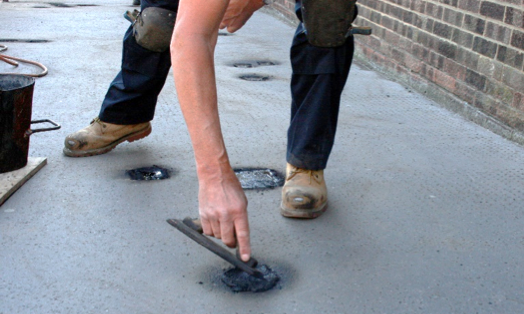I agree Our site saves small pieces of text information (cookies) on your device in order to deliver better content and for statistical purposes. You can disable the usage of cookies by changing the settings of your browser. By browsing our website without changing the browser settings you grant us permission to store that information on your device.

In early February 2019, we were approach by our client to evaluate the issues they were having with trip hazards to the external access areas to the Mid-Kent Shopping Centre.
Access is always a concern within the retail sector and providing safe access for patrons is beyond compromise, so when our clients have issues with potential hazards its dealt with as a priority. We were asked to diagnose the raised areas found on the external access area as they created potential trip hazards which had the possibility to lead to injuries and possible litigation claims.
On inspection the uneven surface area had occurred due to trapped moisture resulting in what is known as asphalt blows. When moisture gets trapped under asphalt it ponds beneath and as the external temperature outside increases or the sun heats up the asphalt, the moisture begins to evaporate and the only way it can escape is up. The pressure of the evaporation process then pushes up against the asphalt creating a bubble or dome aka blow, left unattended this will continue to rise and eventually burst leading to splits or craters in the asphalt which happens over a long period.
We diagnosed the initial cause as a water leak the entry point being the top of the slope, and due to the slope, the water had travelled down and would get caught in the divots in the concrete, creating blows over a long period of time.
In this instant the asphalt was laid directly onto uneven concrete, so the blows mainly occurred when there were divots in the concrete that the water had filled and stuck in.
On Friday 24th May 2019, 2 of our highly-qualified asphalt specialists, Ryun And John, went to Mid-Kent Shopping Centre to fix blows that had developed in on a ramp, which was causing uneven surfaces and was a major hazard.

1) We had to cut around the blows using an angle grinder, this allows us to take the old mastic asphalt out after it has been heated up. The mastic asphalt must be heated using a blow torch. This makes the mastic asphalt soft and allows us to easily take up an isolated patch.
2) After the old existing mastic asphalt had been heated up, we used a hammer and bolster to pull up the old existing asphalt and because it was heated up it came out easier without causing any of damage to the surrounding areas of the blows. Once the main part of the old mastic asphalt was removed, the edges of the cut out had to be smoothed because it creates a fusion joint, so the new mastic asphalt attaches to the old. Next the area needs to be swept and cleaned and all debris removed, this gets rid of foreign bodies and keeps the area clean and tidy.


3) When laying the new mastic asphalt the hot poultice method is used, this means that the new asphalt is placed in the joint and around the whole, once cooled slightly it is then scraped off and the middle is then flatten, this allows the new asphalt to fuse to the original and creates a stitching joint.
4) After the first layer of mastic asphalt has cooled, the second layer of mastic asphalt is then placed on top and leave it to for a couple of seconds to heat up the first layer so both layers join, the top layer is then smoothed down. After this it is sand rubbed, this aids in water dispersion to the surface.


5) The old existing asphalt had been crimped, which helps with grip, due to this we also decided to crimp the repair patches, so it didn’t look that different. Next, we swept down all the surfaces and left the site clean and tidy.